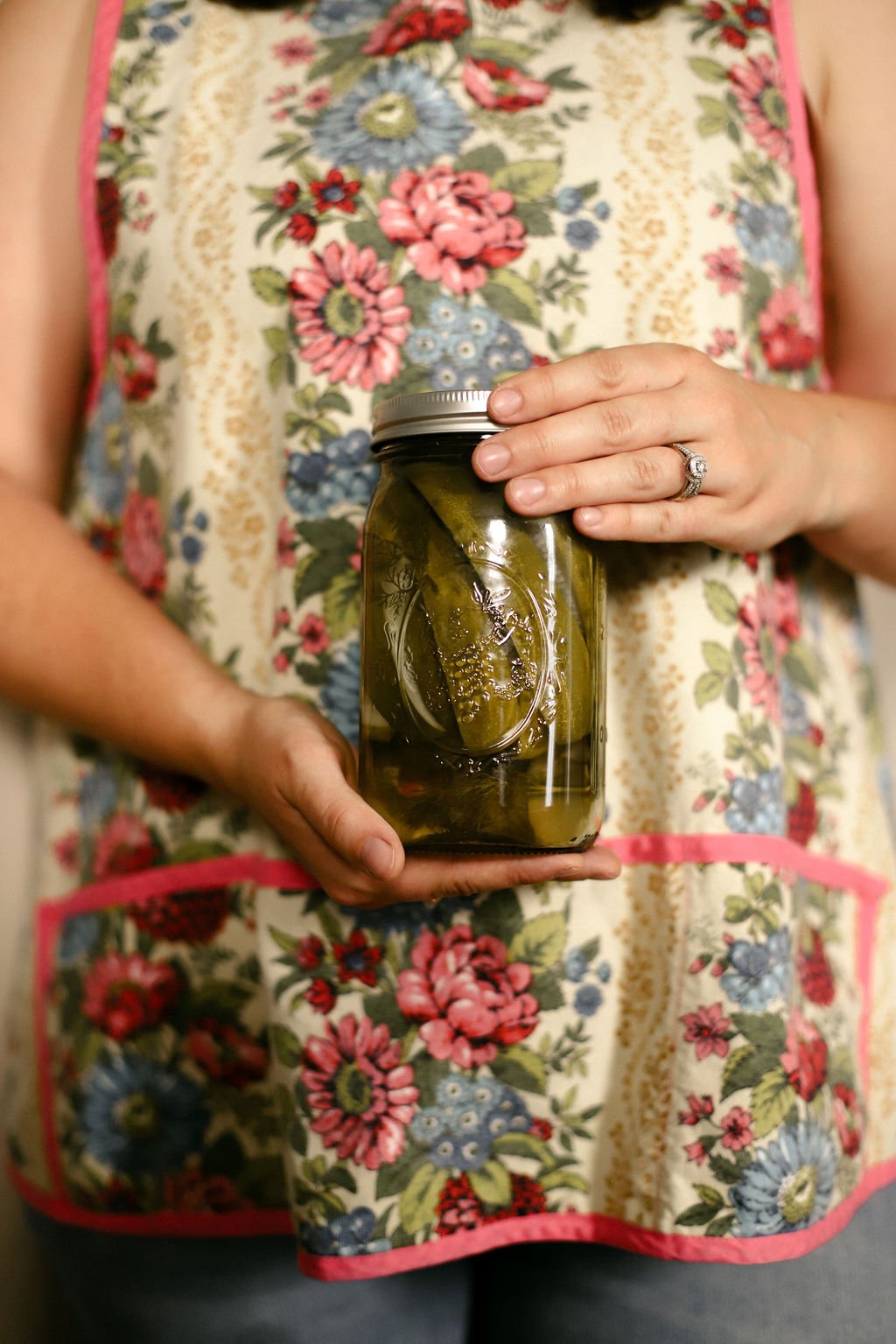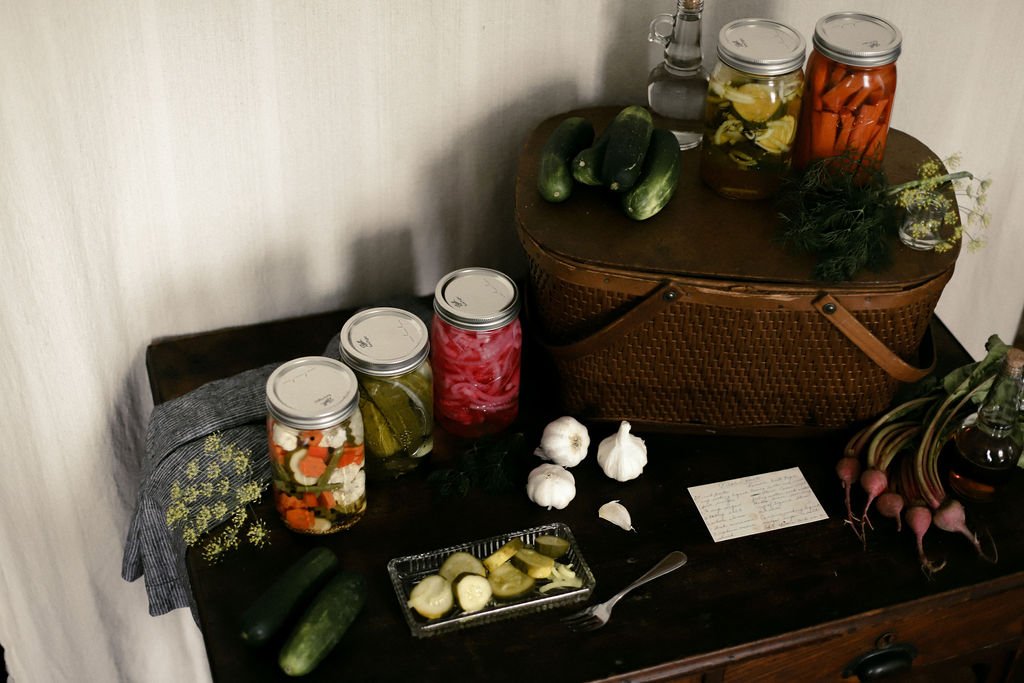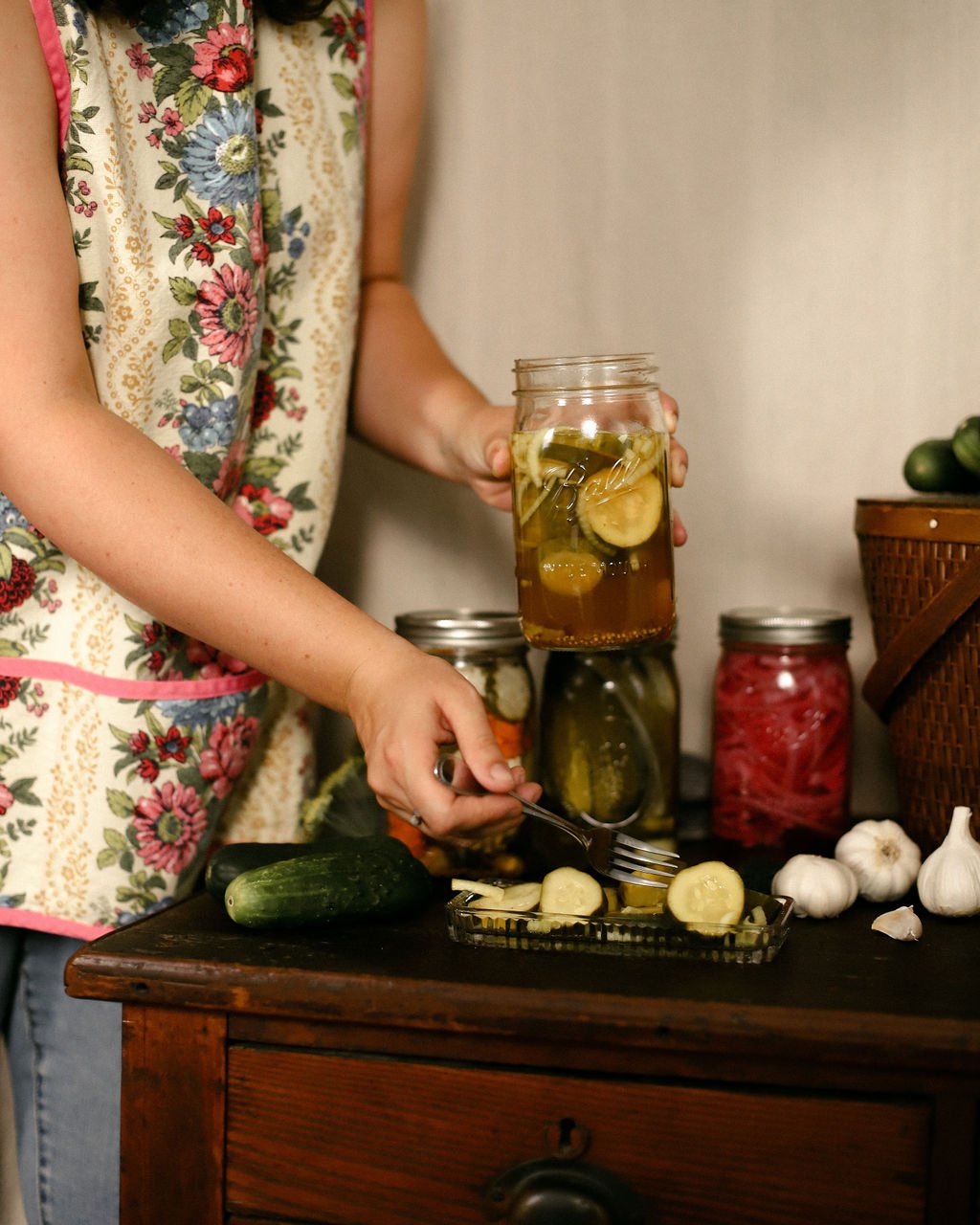Quick Pickling 101
Pickled vegetables are a favorite summertime snack of mine and with quick pickling, they are so easy to make yourself! Maybe you have memories of your grandmother or great grandmother pickling fresh vegetables during the summer, but you’re intimidated by the canning process. Quick pickling, or refrigerator pickling, is a great place to start! Extend the life of your fresh produce, upgrade your charcuterie board or create a delicious topping to brighten up your dinner plate. Quick pickling is a surprisingly easy process to learn and soon you’ll be making your own tasty combinations.
First, what is pickling?
Pickling is the process of brining vegetables or fruit in acid, usually vinegar. It is one of the oldest techniques for preserving food – dating back to ancient Mesopotamia! Traditional pickle making includes canning, which uses high temperatures to sterilize and create an airtight seal that further preserves the contents from spoilage. Quick pickling uses the same basic ingredients as traditional pickling but you skip the canning process and store them in your refrigerator.
How long does quick pickling take?
The actual process of pickling takes as little as 10 minutes. Then you should allow your pickles to rest in the refrigerator for a minimum of 2 hours before serving. Although for best flavor, let them brine for 24 hours before serving.
How long do quick pickles last?
Quick pickles are not shelf stable and must be stored in the refrigerator, where they will last for up to one month. The exception being onions and shallots which will last in the fridge for about two weeks. For this reason, quick pickles are best made in smaller batches or as part of your meal preparation.
What vegetables are best for pickling?
Almost any sturdy vegetable and lots of fruits can be pickled! Here are some examples of produce that are commonly used for pickling:
Cucumbers
Asparagus
Carrots
Cauliflower
Bell peppers
Beets
Fennel
Onions
Radishes
Turnips
Green beans
Okra
Cherries
Grapes
Peaches
Citrus fruits
Strawberries
Rhubarb
Watermelon/ watermelon rind
Blueberries
Apples
Pears
Plums
Currants
Tomatoes
Olive
What type of vinegar, salt and sugar should I use?
Vinegar: It depends on the flavor you are going for! Distilled white vinegar is the most commonly used, because it has a clean, crisp flavor that retains the produce’s original taste and color best. Apple cider vinegar lends a milder, sweeter flavor if you don’t mind the darker color. White wine, red wine and champagne vinegar all are great to use with pickling. Thicker vinegars like malt or balsamic can be used, but they have a stronger taste so it’s suggested to dilute those with white vinegar in a 1:4 ratio.
Salt: There are specific pickling/canning salts available but for quick pickling, kosher salt is best. You can use table salt as well, but the non-caking agents in most table salt may turn your brine cloudy.
Sugar: Granulated white sugar is the most commonly used sugar. If you would like to add a different flavor to your recipe, try using brown sugar or coconut sugar.
Which herbs & spices are good for pickling?
This all depends on your personal taste and what flavor you are going for! For something like pickled red onions that I’m going to use as a topping, I typically go for just a clean and simple flavor with no extra spices or herbs. For classic dill pickles, a combination of dill (weed, seed and/or flower heads), garlic cloves, mustard seed and peppercorns is commonly used. A basic, all-purpose pickling spice usually will often include peppercorns, mustard seed, coriander seed, dill seed, red pepper flakes, bay leaves along with a “sweet” spice like cinnamon, allspice berries, or cloves. Here are some common spices and herbs that I’ve seen used in pickling recipes:
Black or white peppercorn
Dill weed (fresh or dry), seed or flower heads
Mustard seeds
Coriander seed
Cinnamon sticks
Allspice berries
Mustard seed
Coriander seed
Bay leaves
Garlic
Ginger root
Whole Cloves
Black peppercorn
Cardamom pods
Dill seed
Red chili flakes
Star anise
Fennel seeds
Rosemary
Oregano
Thyme
Tarragon
Mint
Sage
Chives
There are tons of pickling recipes out there for you to get inspired by, and I invite you to experiment with making your own flavor combinations! I’m sharing a few I’ve been playing with along with the recipe for a simple, all-purpose brine you can customize to your own liking below.
All-Purpose Quick Pickling Brine
Ingredients
Fresh produce
1 cup water
1 cup vinegar
1 tsp salt
1 tbsp sugar
Optional: 1 tbsp whole spices + fresh herbs
Instructions
Measure out about 1 tablespoon of your chosen spices and herbs and add to your pickling jar. Add your washed and sliced produce, packing the jar tightly.
In a medium saucepan, bring the water, vinegar, salt and sugar to a boil. Remove from heat and carefully pour into pickling jar until all contents are submerged. Close the lid on the jar tightly.
Let the jar rest on the counter until it cools to room temperature. Then, place the jar in the fridge and allow to pickle for a minimum of 2 hours before serving. For best flavor, allow to pickle for a full 24 hours before serving. Most Quick pickled produce will last in the refrigerator for up to one month, with the exception of onions/shallots which last about two weeks.
Note: If you want to make sweet pickles, increase the sugar to taste. I’ve seen recipes use up to equal parts sugar, water and vinegar, so for the recipe above that would be 1 cup.
Seasoning ideas to get you started
Pin this to reference later!

















